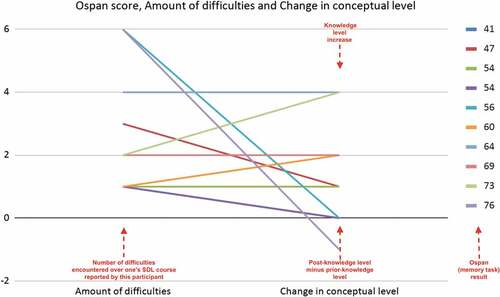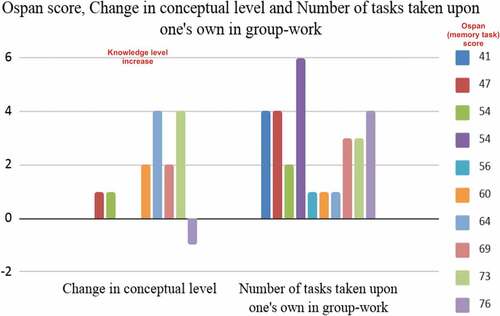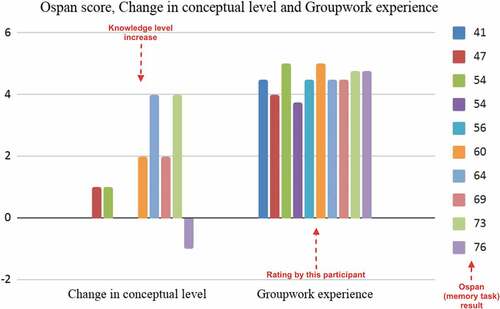Figures & data
Figure 1. Research design and instruments of a study(i.e., participants’ learning) activity timeline.

Figure 3. A screenshot of the application used in this work called ”Avastusrada” (”Tracking path” in English).

Figure 4. Dynamics in participant’s conceptual knowledge level in light of his/her cognitive capacity score (given on the right vertical) based on the number of difficulties he/she reported (given on the left).

Table 1. Bloom’s taxonomy
Table 2. Cognitive categories evolved from the difficulties (that were reflected by the participants’ own words)



